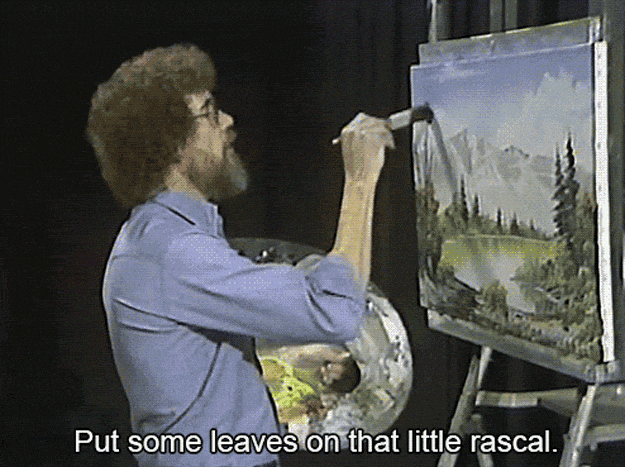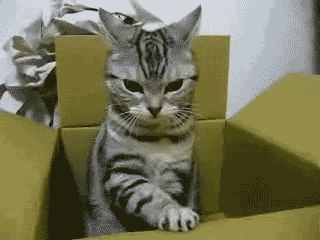
When Creativity Ghosts You: How to Refill Your Creative Well
Nov 03, 2025The Ebb and Flow of Inspiration (is the Worst)!
Do you ever feel like your creativity is ghosting you?
Or maybe you're so swamped with life's chaos that your art's been demoted to "someday" status, right next to learning French and mastering banana bread from that trend in 2020?
I've been there. I think all of us have.
The feast-or-famine creative cycle is exhausting. One week you're churning out patterns like a creative machine, and the next? Nothing. Nada. Your Procreate app gathers dust and you wonder if you've lost your artistic mojo forever.
But here's the thing: your creative well is just running dry—and you need to refill it.
Before you turn in your stylus and say maybe you're "not cut out for this," let me share a simple trick that has transformed my creative practice into something sustainable, joyful, and actually fun. This isn't about forcing creativity or white-knuckling your way through creative blocks. It's about building a practice that feeds your inspiration and gives you permission to play.
The Real Reason Your Creativity Feels MIA
It might look like everyone online has their act together and creativity just flows out of them the minute they sit in front of their iPads.
But the truth is, it doesn't work like that.
It's not because they're more creative than you. It's because they've built habits, systems, and—most importantly—they've learned how to refill their creative wells.
Your brain needs input before it can produce output. Creativity isn't a magical force that strikes from nowhere. It's your brain making new connections between things you've seen, experienced, and absorbed.
Here's something that may surprise you: studies show that our modern culture doesn't play enough. Netflix doesn't count. I'm talking about creative play, where your body and brain are actively engaged in an activity without any goal or purpose. It's just for fun.
We often treat every creative session like it needs to produce something sellable, post-worthy, or portfolio-ready. But creativity research shows that our best work comes from play—from relaxing the brain, drawing without purpose, and letting our minds wander without judgment.
Do you feel guilty about drawing without a goal? That's a sign you could benefit from my little creativity coaxing trick.
The good news? You can rebuild this. And it starts with how you capture and use inspiration.
Building Your Inspiration Journal: Your Creative Well's Water Source
Have you ever found yourself scrolling through beautiful artwork online, and that sparks an idea for a motif or color palette and you think, "Next time I sit down, I'll sketch that out or play with those colors?" But by the time you actually sit down, that spark is gone and you can't quite remember what you were excited about drawing.
This happens to all of us. Our brains are like browsers with 47 tabs open—eventually, something's gonna crash.
Being creative is a beautiful gift. But it comes with one really inconvenient caveat: you can't control when creative intuition strikes. You can't decide when creativity will spark an idea, and trying to force it is about as fun as a root canal.
So even though you may have heard this before—it's time to start keeping an Inspiration Journal. I know I'm probably not telling you something new, but we need to be reminded more than we need to be taught. Repetition is the key to learning—and to success.
Step 1: Choose Your Format
Grab a notebook or fire up a digital app. I'm a die-hard Pinterest fan myself—it's like having an infinite filing cabinet that I can access from my phone while waiting in the school pickup line. But honestly? Use whatever works for you. Notes app, Notion, an actual physical journal—use whatever works best.
And if you find yourself excited about Notion for a week and then sort of not that excited anymore, it's okay to try a different format. Just keep going until you find the format you can access and use consistently.
Step 2: Act On Inspiration
Whenever that tricky, unpredictable inspiration does strike—maybe it's a color combo that makes your heart sing, or a funky shape you spotted in your kid's spilled Cheerios—jot it down or sketch it out. Take a photo. Screenshot it. Voice memo yourself rambling about why that sunset gradient is perfect for your next collection.
The key is capturing it immediately. Don't trust your memory. Your memory is a beautiful liar who promises to remember and then immediately forgets because… you're out of milk and need to go to the store and why aren't the soccer jerseys clean? (Goodbye inspiration.)
Things You Can Capture:
- Color combinations that make you stop scrolling
- Patterns you spot in everyday life (tile floors, fabric, wrapping paper)
- Textures that intrigue you
- Random thoughts about themes or concepts
- Words or phrases that spark ideas
Pro tip: Make this journal as weird and wonderful as you want. No one's grading you. And you never know when that half-formed doodle might turn into your next masterpiece! Plus, if you're using Pinterest, you can always hide your boards so they remain just yours—your own private creative playground.
Step 3: Organize Your Themes
Don't just dump everything into one giant "Inspiration" board or notebook. Organize your ideas into themes or categories. I've got Pinterest boards named things like: "Summer Fruit" (what can I tell ya—I love drawing fruits!), "Moody Florals," and "Textures That Make Me Happy."
When you're staring at a blank canvas wondering what to create, these themed collections become your personal idea buffet. Instead of feeling overwhelmed by everything, you can say, "Today feels like a florals day," and dive into just that board.
If you use a physical notebook, color-coded tabs are really helpful. You can create a key at the front of your notebook. Binders are even easier because you can add new pages and move pages around.
Step 4: Playing (Where the Magic Happens)
Grab a cup of coffee and curl up in your softest chair. Spend a little time looking through your Inspiration Journal. Just let your mind wander over the ideas you've collected. Try not to think about what will sell or make money. This is the start of your creative play time.
When you're relaxed and ready, open your sketch pad or iPad. Just start playing. Draw variations of that motif you can't get out of your head. Experiment with scale. Play with different brushes. Try that color combination with zero pressure to make it "work." Create terrible versions alongside interesting versions.
When you remove the pressure to create something "good," your brain relaxes. That relaxation is crucial for creativity. When you improvise, the part of your brain responsible for self-monitoring and judgment actually shuts down. That's when the magic happens.

Your play sessions give your brain permission to make connections, try weird combinations, and stumble onto ideas you'd never deliberately plan. Some of my best-selling patterns started as "ugly doodles" during pressure-free play sessions.
Pro-Tip: After a play session, use my free Seamless Pattern Tester to see how your experiments look as repeats.
This isn't about judging whether they're "good enough"—it's about understanding how your ideas work at scale. Sometimes an okay-looking tile becomes magical as a repeat. Sometimes your favorite motif doesn't work once it's tiled. This visual feedback feeds back into your inspiration journal.
Building a Sustainable Creative Practice
Once you've established this inspiration-and-play cycle, you'll notice something shift. You'll stop feeling like creativity is something that happens to you (when you're lucky) and start experiencing it as something you can cultivate.
Your inspiration journal works like a time machine for your creativity. When you sit down to create, tap into that energy by glancing at the things that inspire you, then give yourself permission to play. Before you know it, someone will DM you on Instagram and ask: "How are you able to create such inspired art so consistently?"
And you'll smile, because you'll know the secret: it's not about being more talented or inspired than everyone else. It's about building systems that feed your creativity and giving yourself permission to play without pressure.
Taking It Further: Find Your Next Step
If you're reading this and thinking, "Okay, I'm ready to go deeper with my surface pattern design practice," I've got something special for you.
I've created three FREE 5-day email courses designed specifically for surface pattern designers at different stages of their journey. Take my free quiz and I'll point you toward the course that matches exactly where you are right now.
And if you're ready to master the technical side of pattern creation, my Procreate Pattern Collection Masterclass or Photoshop Patterns Unleashed courses are designed to work hand-in-hand with this inspiration-and-play practice. They give you the technical chops to execute the ideas that come from your play sessions.
For ongoing inspiration, accountability, and weekly creative nudges, join my free newsletter 3, 2, 1...Let's Design! Every Thursday, I share tips, encouragement, and real talk about the creative journey.
The Bottom Line
When you pair intentional inspiration gathering with pressure-free play, you create a sustainable creative practice that doesn't depend on the muse showing up. You build the conditions for creativity to flourish—even in the messiest, busiest seasons of life.
So grab that iPad (or open that Pinterest app), start capturing what catches your eye, and then—here's the crucial part—take time to play with those inspirations. Not to create portfolio pieces. Not to make something post-worthy. Just to explore, experiment, and see what happens when you give your brain permission to wander.
Because here's the real secret: Magic happens in the playing, not in the perfecting.
Now go fill that creative well—then give yourself permission to splash around in it.



